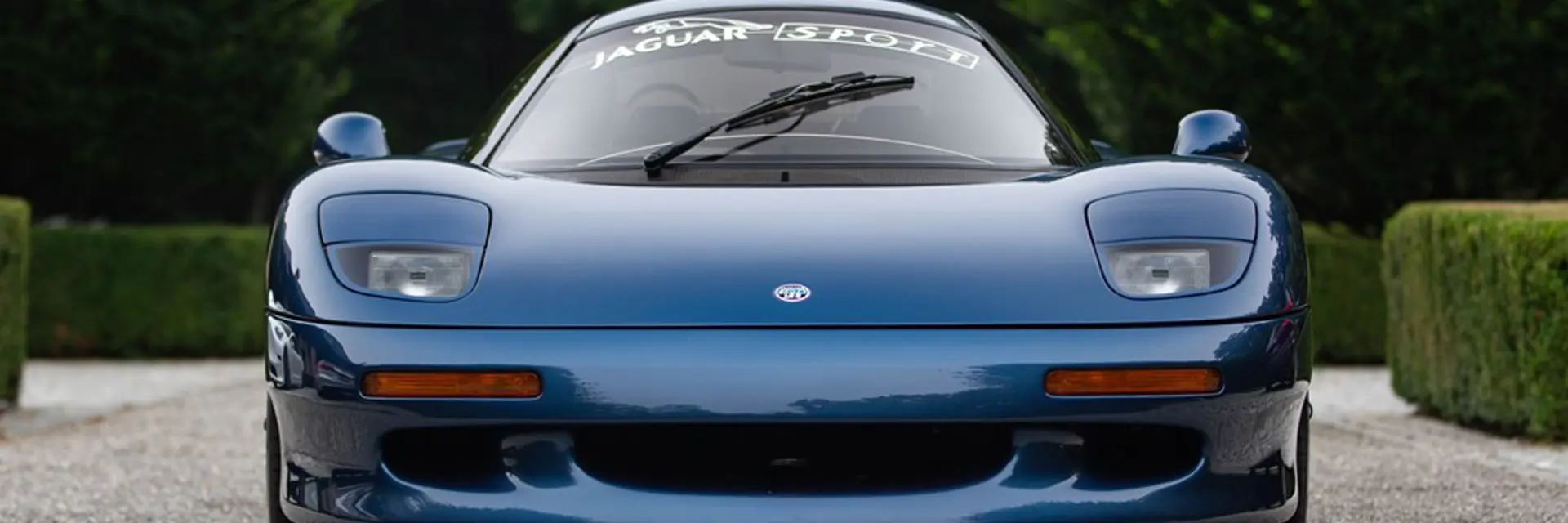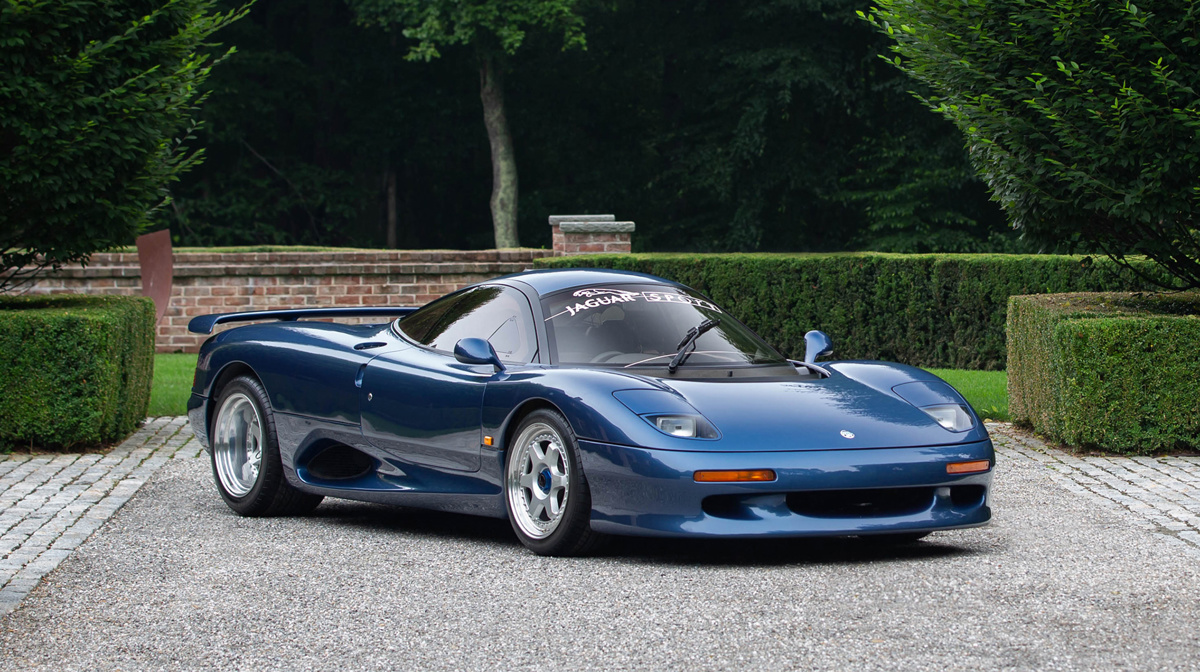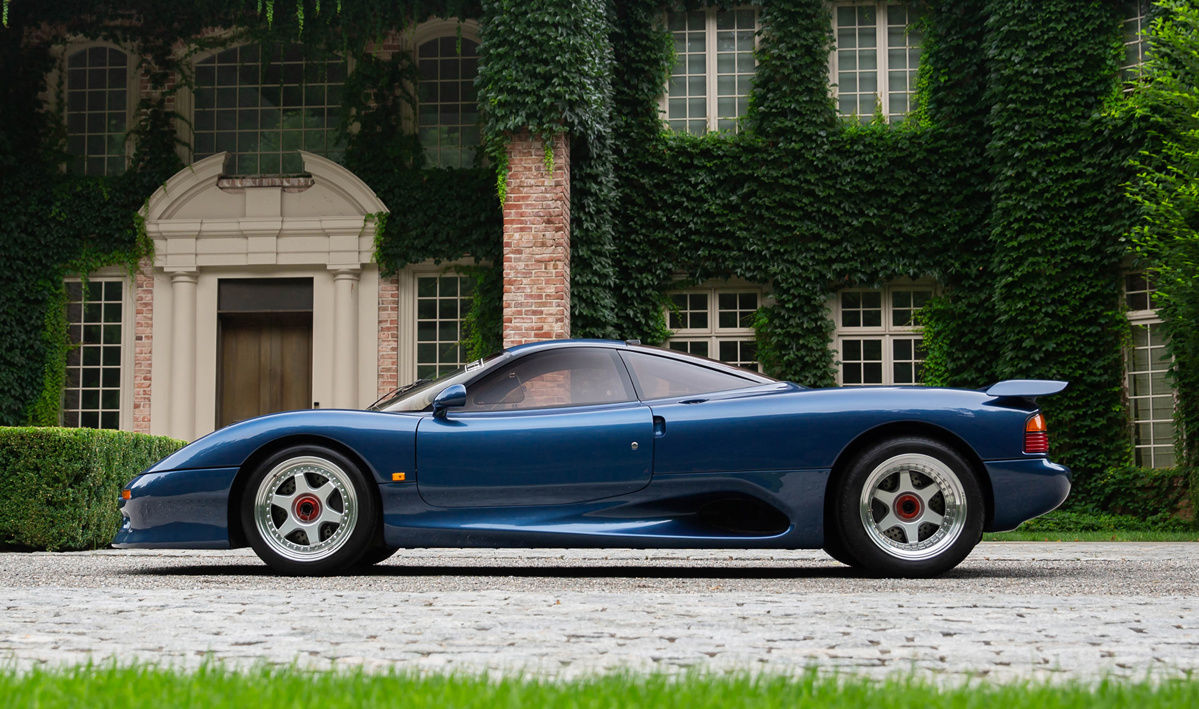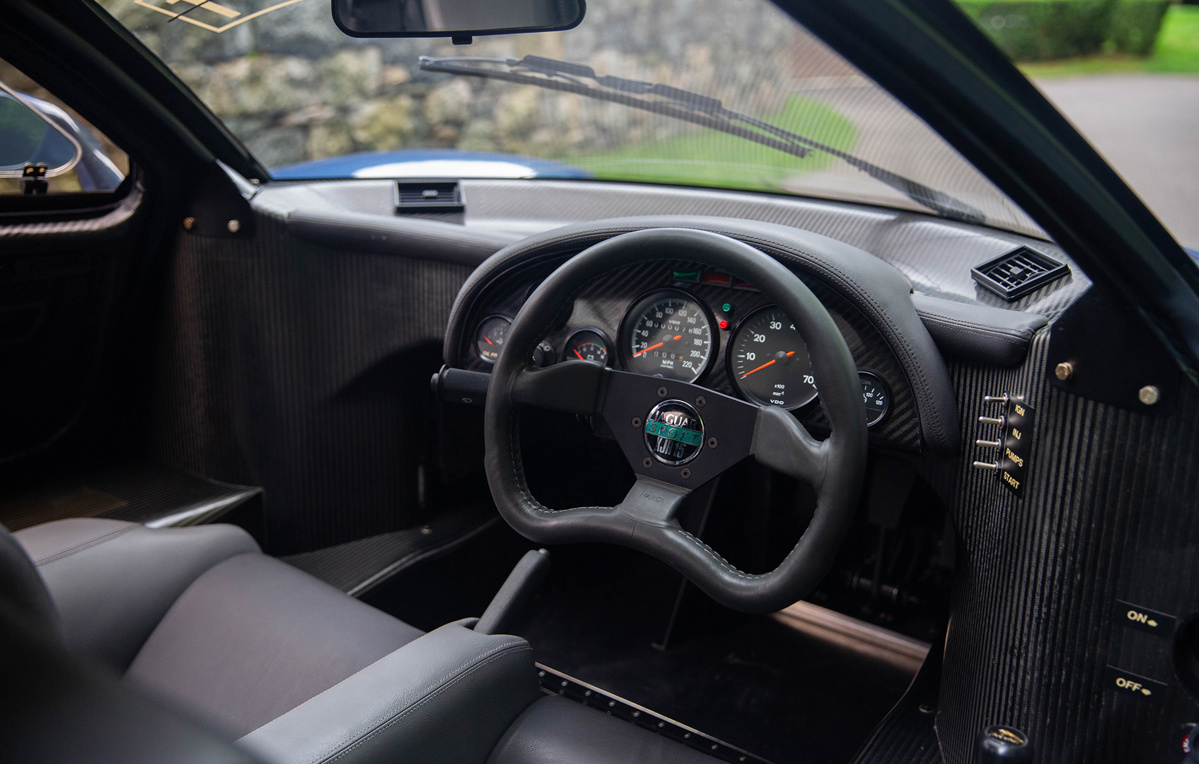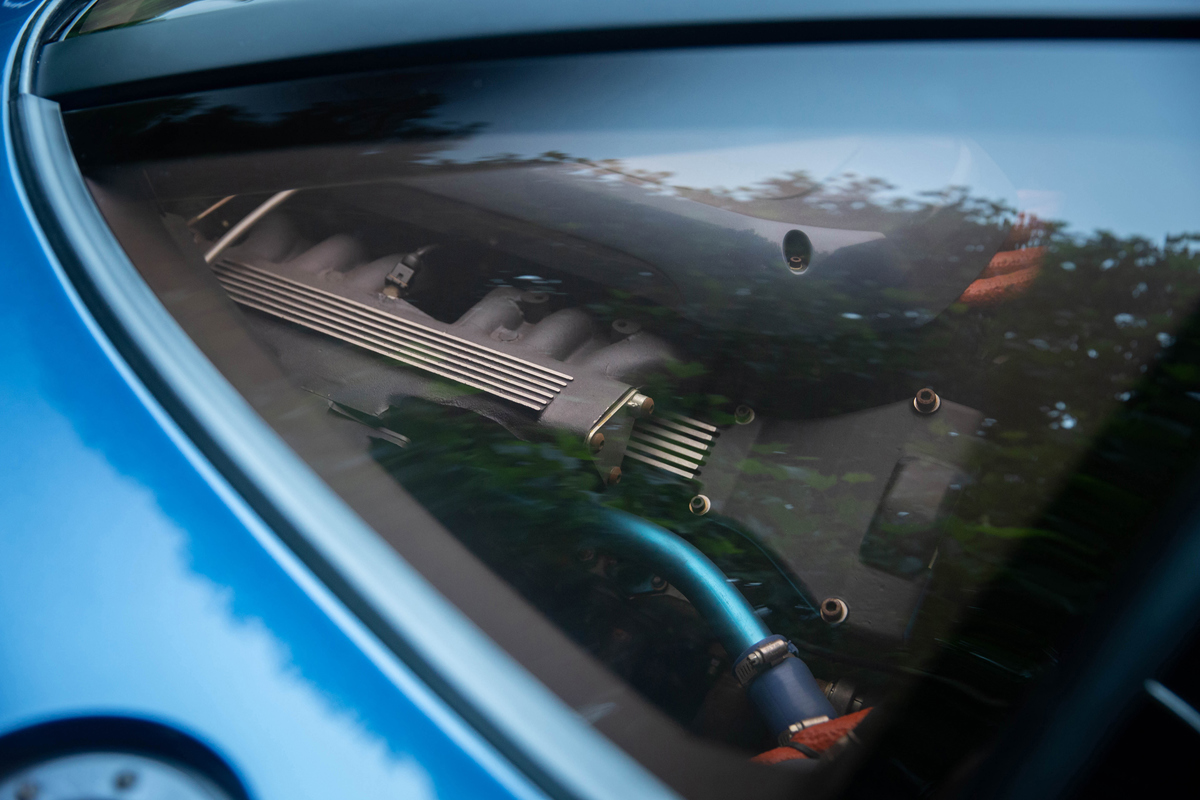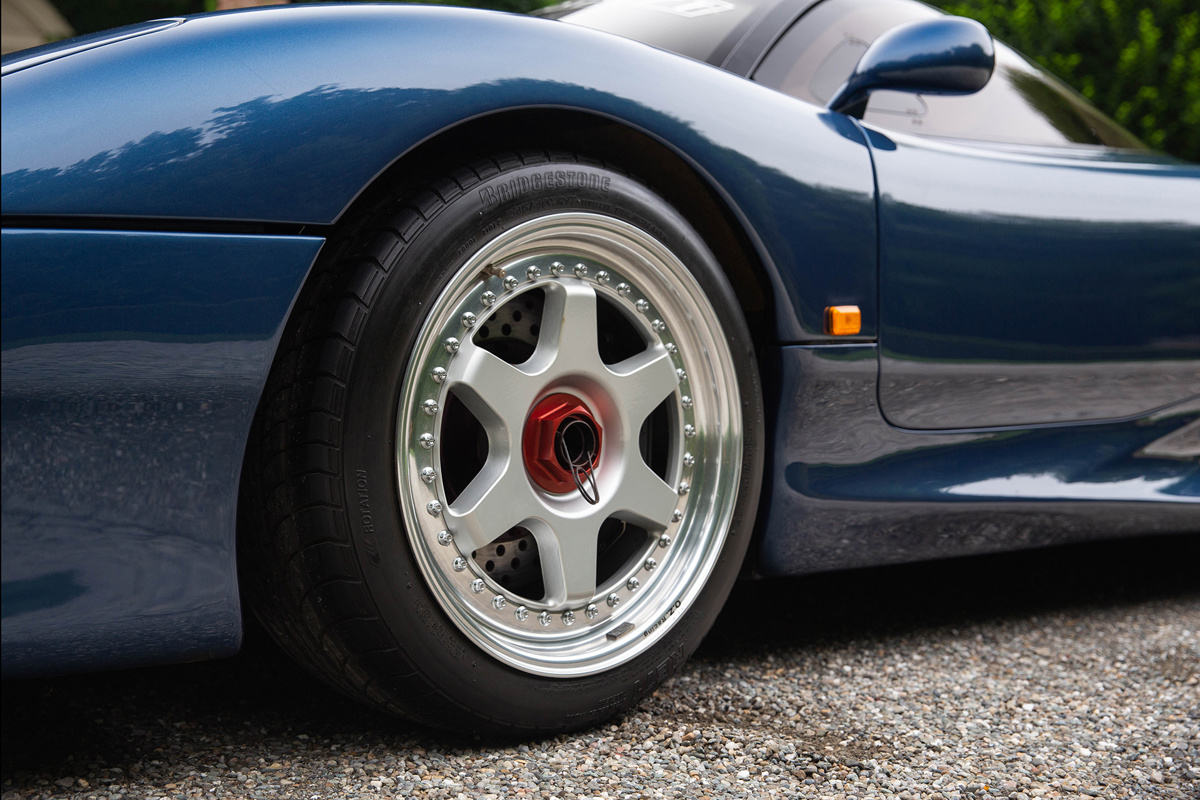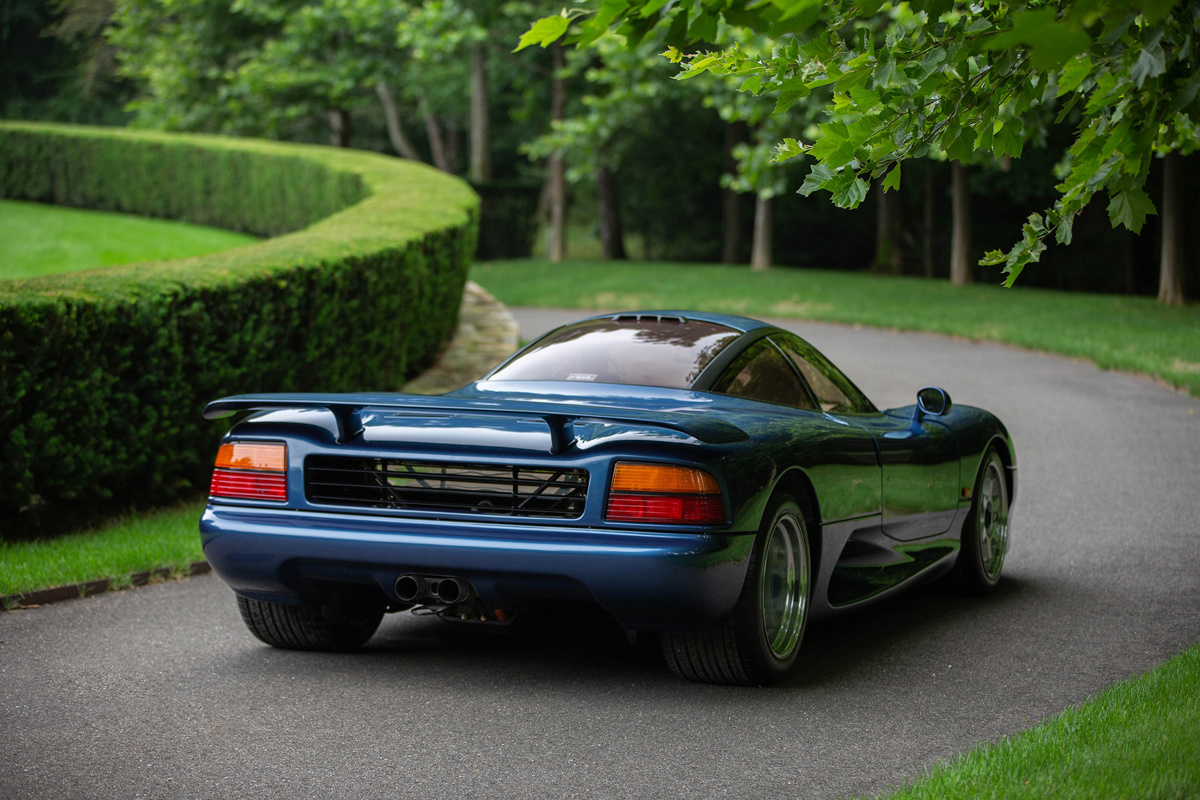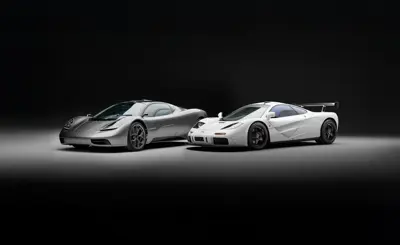In a decade defined by grunge music and economic malaise, the nineties were especially difficult for supercar fans, at least those living in America. Though the rest of the world was treated to genre-defining icons like the McLaren F1 and Pagani Zonda, neither were federalized for export to the United States. American supercar connoisseurs also missed out on one of the most fearsome, performance-oriented efforts ever to come out of the United Kingdom: the Tom Walkinshaw Racing-developed Jaguar XJR-15. One of a mere fifty-three examples ever made of this uncommon Jaguar, RM Sotheby’s will proudly present this supercar inside the De Anza Ballroom in our signature Monterey Auction next week, running from 12-14 August 2021.
1991 Jaguar XJR-15
Estimate: $1,750,000 - $2,100,000 USD
Before the launch of their other nineties supercar, the Jaguar XJ220, the leaping cat brand’s focus was directed mostly on motorsport. Benefitting from a partnership with legendary driver-led team Tom Walkinshaw Racing, the consummate British sporting brand scored a series of successes in the late 1980s, with the Jaguar XJR-9 LM earning victory at its namesake endurance race with an outright win at the 24 Hours of Le Mans in 1988. Not long afterward, Walkinshaw conceived the idea of creating a road-going version of his all-dominating racer and enlisted talented London-born designer, Peter Stevens, to craft a suitable shape for the new supercar.
The result was a symphony in symbolic elegance. Stevens, who is perhaps best known for crafting the McLaren F1, managed to create two of the decade’s greatest hits without repeating his own designs. Part of the reason why the Jaguar XJR-15 is such a cohesive shape is that it was allowed to be a no-compromise sports car. Unlike the mighty McLaren, the XJR-15 did not require a side-mounted luggage compartment or a third occupant.
Inside, the purposeful cockpit of the Jaguar XJR-15 reveals the groundbreaking supercar’s other claim to fame: the use of carbon fiber in the construction of the body and tub was a world-first on a road-going automobile. Underneath every body panel, the hard work and dedication of the Jaguar Sport team is on display, with the woven fibers presenting an atmosphere of high technology. As the XJR-15 was meant to allow for some creature comforts, Stevens’ design team raised the height of the roofline by 1.6 in. to allow easier ingress and egress.
The pinstripe-style woven carbon fiber extends throughout the cabin, framing the twin race-style buckets for an altogether purposeful look. Race-inspired innovations extend to the five-point harnesses and the gray leather seats themselves, which feature color-matched electric blue inserts and are designed to maximize this supercar’s center of gravity. The final accessory is a two-way intercom radio, meant to ease communications both between driver and passenger as well as with team leaders on track days. A recent appearance by a different XJR-15 example on Jay Leno’s Garage proves a thrilling experience can be had on the road as well.
Gazing rearward, one can witness the true centerpiece of this car, and the item that alone sets it apart from its XJ220 sibling: a heavily tuned version of the 6-litre, V-12 engine which powered the XJR-9 to victory on the World Sports Car circuit. The motor, set low in the supercar, was attached to the chassis as a stressed member. The rest of the suspension was competition-grade as well: double-wishbone suspension at every corner, with pushrod-activated horizontal springs and dampeners. Unlike more modern offerings, the operatic engine on the XJR-15 was operated by the driver themselves, with a five-speed, unsynchronized gearbox providing the ultimate in driver engagement.
Three-piece OZ wheels riding on Bridgestone tires with center-locking caps provide even more evidence of this Jaguar’s on-track abilities. However, because a mere 53 of these early nineties supercars were ever made, the XJR-15 is comfortably more uncommon than many of its in-period peers. Recognizing the rarity of this Jaguar supercar from very early on, this Japanese-delivery example has been extensively pampered, and at the time of cataloguing showed a mere 78 miles.
Having now passed the legal number of years to be considered a classic, this uncommon supercar was imported to the United States in 2019. As recently as 2021, this example received a thorough reconditioning by a marque expert to bring it up to modern standards. The extensive files and receipts for this servicing are available on file. With a genuine lineage from an icon of British motorsport and an all-conquering, twelve-cylinder engine on tap, Jaguar fans are sure to be captivated when this example goes up for auction in Monterey on 14 August.

